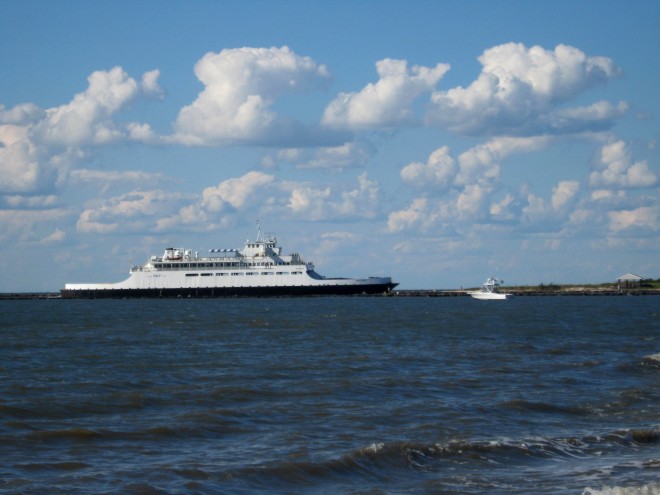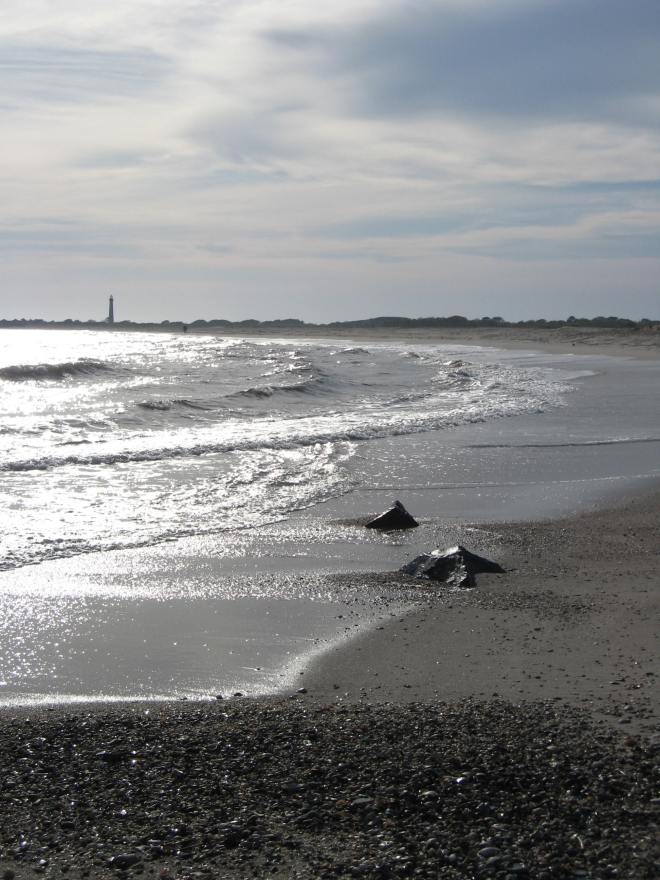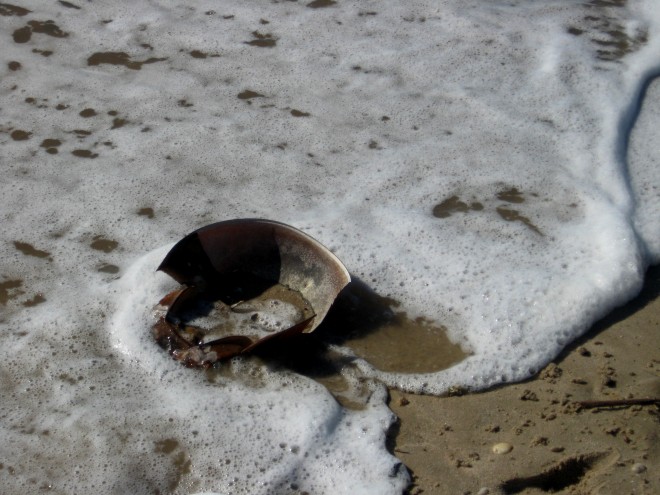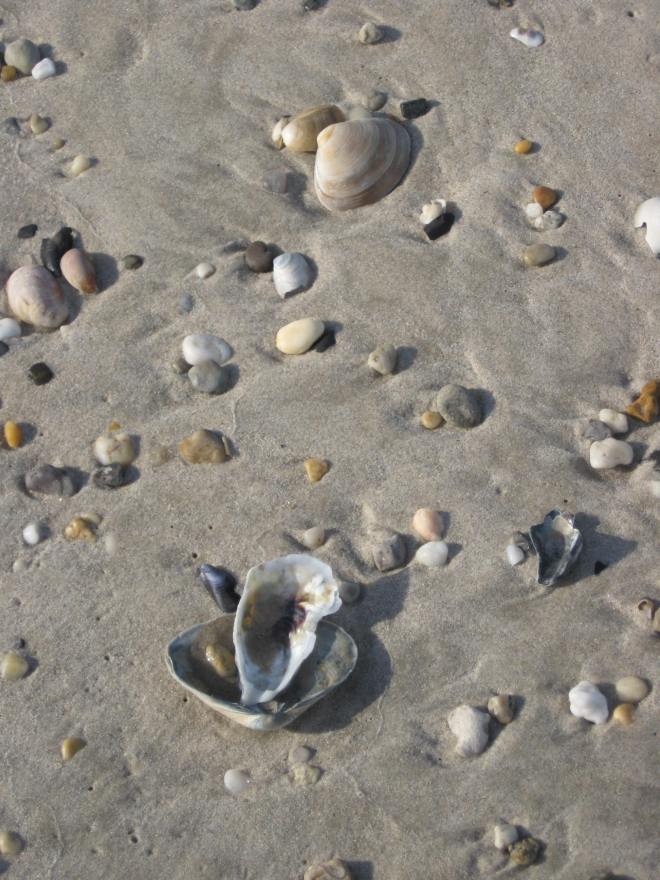Tumultuous or calm, I am shattered by the duration of sea-less time demanded of me
by Corona.

John Masefield’s longing for “a warm wind, the west wind” had to do, not with just any sea and sky, but that which surrounds his West Country, Britain’s Cornwall. Some waves striking and foaming upon Cornish slatey rocks have touched no land since leaving America’s east coast. Some of the sea that mattered to Masefield (and me) is the Bay of Tintagel, in which Arthur’s summer palace lived in flawlessly defended (by black rock and sea) splendor.
But the sea and sky I miss most in this Lockdown Life is American’s own ‘land’s end’ – Cape May and Cape May Point.
I not only miss the Atlantic and the Delaware Bay – I miss the gentle shrubby conduits we take, toward both birding and swimming in season. These two scenes are Cape May’s Higbee Beach. In the warming time, this peaceful area is dominated by “morning flight”: Vociferous hordes of birds return to, and sometimes collapse upon these pristine sands, exhausted. They have just crossed our twelve-mile-wide Delaware Bay, in their challenging migration journeys from wintering grounds. To catch the flight phenomenon, best to be at Higbee before dawn. All will be over by nine a.m. or so, at this particular site. But everywhere at “The Point” is bird-rich now, right now…

People migrate, also, upon the Cape May-Lewes Ferry. Birders take these trips, not necessarily involving vehicles, in order to lift magnificent optics to follow pelagic birds. They’ll turn right ’round in Lewes and return, watching every wing.
The everyday word for pelagics, – ‘seabirds’-is somewhat misleading. Under this term, \even gulls would generate enthusiasm. ‘Pelagic’ denotes birds that spend significant portions of life on the open ocean, rarely venturing to land except to breed. (And sometimes in storms, when birders are the ones migrating to Cape May, alerted by hot lines/Twitter, and the like.) The albatross may be the most famous pelagic, partly, also, because of a poem, Coleridge’s dramatic “Rime of the Ancient Mariner.”
Shearwaters, petrels, frigatebirds and fulmars are undisputed members of this tribe.

I am not pelagic! I have no excuse for my need for saltwater settings. Growing up in Michigan, I became accustomed to our literally Great Lakes. Both Michigan and Superior seem oceanic — in extent, power and danger. I have to admit a a few quibbles here, though, along the lines of salinity and tides.

Black skimmers are not pelagic. They nest on offshore sandy isles near Cape May. One of the treats of Cape May dawnings is the return of these magical creatures from The Great Wherever. Angling in, in droves, these flocks stun birders and non-birders alike with their numbers and their beauty.
Skimmers live up to their name and are most easily seen in Absecon Bay off ‘The Brig’/Forsythe near Smithville, NJ. It’s like watching a winged corps de ballet –choreographed by Balanchine–, as they sink with drama and grace toward the water that is their stage and dining room.
That bright red lower mandible slices the surface. It is so sensitive, it can sense nourishment that then flows right on into all that openness. There is nothing more appropriate to Memorial Day or the Fourth or Labor day than skimmers’ combos of red bills, indigo waters, the whitest of clouds above echoing every sweep of brightness adorning these winged acrobats!
It’s very easy to be distracted by skimmers, even from breakfast at Cape May.

The above is my favorite walk in all seasons , from the Jetty to Cape May Light. You DO have to be better versed in tides, however, than this Michigander. You do NOT want to arrive at the Light, lofted above Cape May point, only to turn around and find your trail is under the ocean you so require.

Wondrous nature photographer Brenda Jones found this American oystercatcher at Barnegat Light, not far from Cape May. That habitat includes rocks, which oystercathcers require in order to find their eponymous food, which they open so much more easily than we can!
If you ‘hit’ Cape May Jetty-to-Light sand at the right tide, right about now, you will hear wild whistling of territorial oystercatchers. Do they EVER mean BUSINESS! They’re mating now, so seriously seeking sandy sites for their eggs, nests that can withstand not only storms and increasingly wild winds, but also the ever-increasing ravages of sea-level rise.
It delights me not only to study this glorious creature Brenda brings us, but also to absorb the near-indigo Atlantic Ocean behind him. I know from trying to find harlequin ducks at Old Barney, how very deep and ferocious these waters can be, how treacherous (for humans) these rocks.

This time of year, also, if you’re very lucky, at Cape May and elsewhere, –including Island Beach waters and those of Sandy Hook–, you may discover the red-throated loon. This image comes from a jaunt to ‘the Hook’ on a frigid January jaunt. Would you guess that his throat in breeding plumage is the hue of a Chateau Margaux swirled in a flawless crystal ballon? A very good year, of course…
The sea is far more essential this time of year to the horseshoe crab than it is to yours truly. This ancient relative of spiders (!) surges onto Delaware Bay beaches at high tide(s) of May, each female laying, in one season, as many as 88,000 eggs. Rich in the most nourishing fats, these eggs fuel non-stop Arctic flights for so-endangered red knots, ruddy turnstones, the more bountiful semi-palmated sandpipers and lively, scurrying sanderlings.

This horseshoe crab’s meat likely nourished laughing, herring and ring-billed gulls, gathering (at high tide) now, –as I am not–, along our Delaware Bay.

Another reason I require the ocean, at all times, –and never MORE than NOW!–, is its flotsam and jetsam. [Don’t ask which is which.] Each item on this tide-packed sand has stories to tell.

Both ocean and bay are consummate ‘stylists’! (At 20, I was a food stylist in Manhattan for the finest photographers, immortalizing General ‘Foods’ products.) I never attained these heights — credit Mother Nature and Neptune.

I like ‘reading’ the tide’s signatures, like sentences, like arabesques, in among these left-behind shells and stones. The pristine nature of beaches now is a real triumph.
Note this real ‘sugar sand’, which still blesses many Cape May beaches. In some places, of course, along our coasts, where Sandy had its way with us, the Army Corps of Engineers has brought in replacement sand. It is dredge sand, –a hideous color–, so thick in texture it guarantees blisters for the barefoot.

You’ve seen this before — I wouldn’t be in the salt waters that surround Cape May this early in the season. But when Jeanette Hooban deliberately swam at Higbee Beach on our Hallowe’en Trip, I was exultantly watching her (in shorts and t-shirt), standing very near. Deceptively tiny waves swept sand right out from under both feet and lo! I fell backwards onto the bottom. Eyes wide, I stared delightedly at perfect sky right through my cherished Atlantic Ocean.
My ocean felt WONderful!
It’s something about limitlessness.
It’s something about beauty.
Definitely about the daily plethora of surprises.
Let John ‘take it’:
Sea Fever

Flotsam floats and jetsam is thrown. Nice trip to the beach!
OF COURSE! re float/thrown – makes perfect sense. Without tides and with usually minuscule waves, flotsam and jetsam weren’t a part of Michigan water time. Thanks, P! c
It will be September before I venture out to the shore, I think. I don’t like the summer crowds under normal circumstances
Ah, but there are so many facets to Cape May – there aren’t crowds at the Rea Farm/Beanery – inquire at Cape May Bird Observatory for maps, etc. Higbee Beach is usually isolate. Then they have three Back Bay Birding half-day cruises, in and out of grassy tussocks of the salt marsh. Go mid-week. You can also drive easily to Salem and Cumberland from Cape May on a rainy day – over to East Point Light, the Bay, Fortescue fishing village, Heislerville island filled with herons, egrets, ibis and nests. Buy Pat and Clay Suttons Birding Cape May, Birding Cumberland – they teach you everything. It’s another world down there. We rarely (except for the little breakfast place in the dunes from which you can see the Light) set foot(e) upon the main beaches… CMBO probably has guided walks, so you’ll learn the ‘secret’ places. Thanks for taking me so many places I cannot go! best cfe